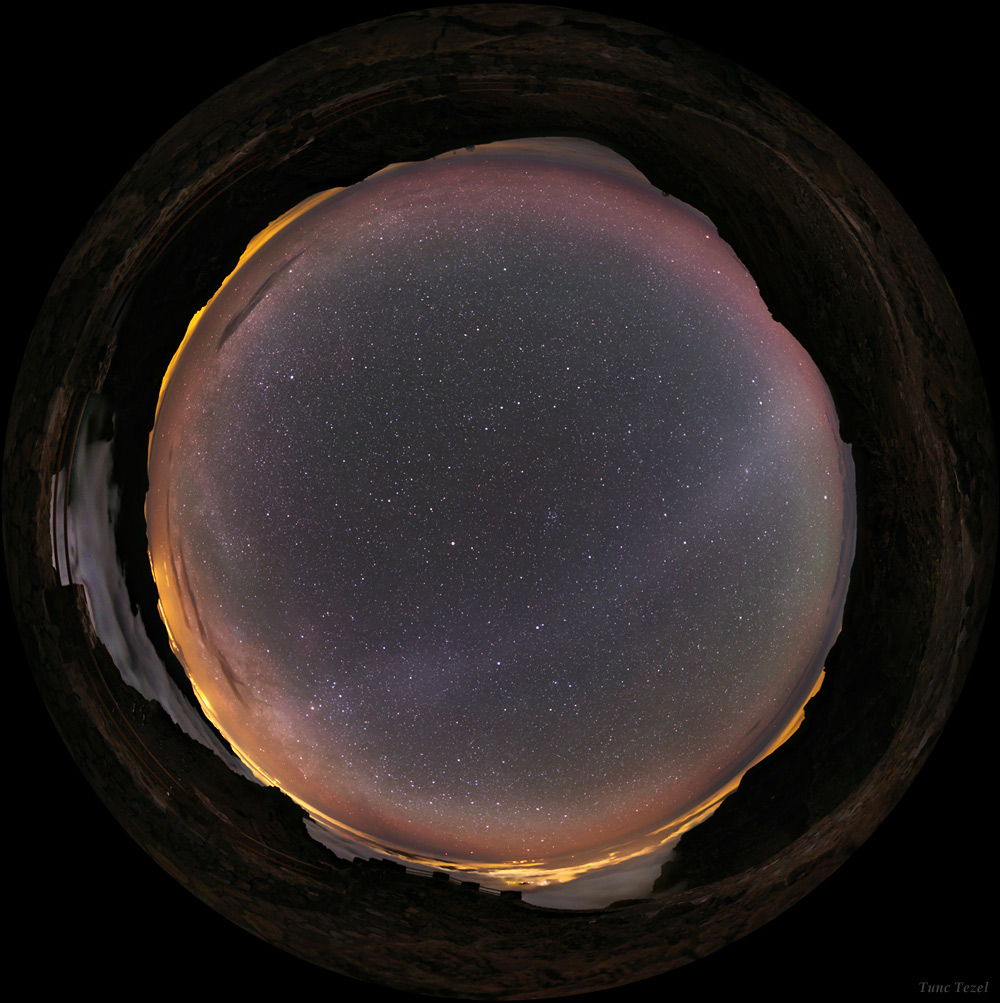
This image captures a magnificent glow of the night sky. The stunning photo was taken by skywatcher Tunc Tezel from the island of La Palma in the Canary Islands.
La Palma is well-known by astronomers because it houses one of the most complete observatories in the world, the Roque de los Muchachos Astrophysics Observatory in Garafía. Cloudless skies and clear weather make the location ideal for stargazing. Tezel took the image on a night with no moon and at a time when the milky way would not create much skyglow. Multiple exposures are taken to create enough light in the photo.
"I had long intended to make a northern counterpart image of this all-sky image taken by my TWAN colleague Stéphane Guisard in Chile, " Tezel wrote on his website. "La Palma lies one to two degrees too far north of the optimum latitude (27 degrees North) but thanks to the clear skies and high altitude I was successful."
Skyglow, commonly called light pollution, is the illumination of the night sky typically through artificial light. Skyglow prevents many of us from seeing some of the stars that dot our night sky. It can also be caused by other stellar objects that emit light. Much of the light in this image is created by skyglow from the milky way as well as light from urban areas.
La Palma is famed for its lack of skyglow and clear skies that provide stunning views of the night sky. In the image, a faint band of light can be seen running through the middle. This band is caused by zodiacal glow, a whitish glow caused by sunlight scattered on space dust. The brighter region of the band is an area of scattered light directly opposite the sun. This region is known as Gegenschein (German for "counter glow") and can sometimes be seen with the naked eye under very dark skies. Zodiacal glow is so faint that even a small amount of light pollution makes it difficult to see.
While the breathtaking view provides a rare glimpse of a hard-to-see sky, creating the image was a time-consuming task for Tezel.
"Creating this all-sky picture took a week to construct, process, and clean. The picture consists of 32 separate shots making a 190-megapixel monster," Tezel wrote.
Editor's note: If you have an amazing skywatching photo you'd like to share for a possible story or image gallery, please contact managing editor Tariq Malik at tmalik@space.com
Follow SPACE.com for the latest in space science and exploration news on Twitter @Spacedotcom and on Facebook.
Get the Space.com Newsletter
Breaking space news, the latest updates on rocket launches, skywatching events and more!
Join our Space Forums to keep talking space on the latest missions, night sky and more! And if you have a news tip, correction or comment, let us know at: community@space.com.
Nina Sen is a freelance writer and producer who covered night sky photography and astronomy for Space.com. She began writing and producing content for Space.com in 2011 with a focus on story and image production, as well as amazing space photos captured by NASA telescopes and other missions. Her work also includes coverage of amazing images by astrophotographers that showcase the night sky's beauty.









